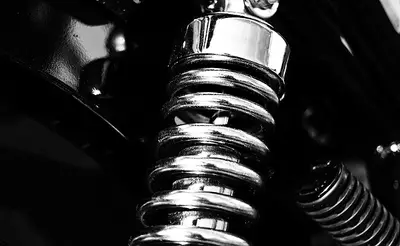The Mechanics of 4WD: Understanding How Your Vehicle Conquers Tough Terrain
Have you ever wondered how your 4WD vehicle navigates challenging terrain like mud, snow and rocky trails? It all comes down to the workings of the 4WD system, which comprises various components and parts that help stabilise your vehicle. This article will explore the mechanics behind the 4WD system, so you'll better understand how this complex but fascinating system works next time you need some 4x4 suspension upgrades, or when performing your own maintenance.
How Does a 4WD System Function?
In short, 4WD is a system that redirects power from the transmission to the front and rear axles. A transfer case is connected to the transmission, which divides power between these two vehicle axles. The power distribution to each axle varies based on the type of 4WD system. These are generally divided between full-time and part-time systems.
Part-Time 4WD
The part-time 4WD system usually only employs the two rear tyres for most of the time, but it uses all four wheels during varied terrain or increased traction. This is good for vehicles that might be usually driven for daily commutes but taken off-road during the weekends instead of serious off-road drivers.
Full-Time 4WD
The full-time 4WD system is constantly moving and uses all four wheels simultaneously, which can be utilised on any surface. It ensures power distribution to each wheel by using a centre differential that allows for varying wheel speeds. It is perfect for those who want their vehicle for permanent off-road use.
How 4WD Operates In Challenging Terrain
When faced with challenging conditions, 4WD comes into play by empowering your vehicle to handle the terrain. But how exactly does it function to provide traction? Let's dive deeper into how these impressive machines work within the 4WD system.
Detecting Loss of Grip
Your vehicle continuously monitors the rotation speed of each tyre. Once it detects one or more tyres spinning faster than others, it recognises it's time to distribute power to all four wheels. This is called wheel slippage and serves as a signal for activating the 4WD system. While the engine in any typical vehicle directs power to the rear wheels, the system distributes power to both axles when the 4WD is engaged. In some cases, power can also be shifted between the rear axles to achieve the grip in different situations.
The ABS System
The Anti-Lock Braking System (ABS) is a recent safety feature of newer vehicles that are designed to stop vehicles from skidding in emergencies. It detects when the brakes are applied too abruptly or suddenly and then eases them to avoid the vehicle slipping.
The 4WD system collaborates with your ABS by selectively applying brakes to spinning individual wheels. This assists in maintaining contact between each tyre and the ground, allowing you to maintain control of your vehicle.
When this system is activated, the 4WD will remain engaged until a certain speed is reached to prevent slippage. It will then disengage temporarily for fuel efficiency until another instance of reduced traction is detected.
The Significance of Locking Differentials in Your 4WD System
Another critical component of your 4WD system is the locking differentials. These parts play a crucial role in maximising the capability of your 4WD system. Let's take a closer look at what the differentials are and how they work.
What is a Differential?
The differential device enables the wheels on each side of an axle to rotate at varying speeds. This functionality is vital for driving on surfaces with traction in any scenario, but when 4WD is activated, it delivers power to all wheels so it can better navigate through challenging conditions.
The Importance of Locking the Front Differential
Without locking the differential, one wheel with traction would spin while the other with more traction would receive no power. Both wheels receive power distribution by locking the differential, providing you with utmost control and forward momentum. This becomes highly valuable when driving over slippery terrains like mud, snow, sand, or gravel.
Automatic Locking Differential
There are some 4WD systems that offer automatic locking differentials that engage when a slip is detected. While others have locking differentials that can be engaged or disengaged by the driver based on prevailing conditions. If your 4WD system provides this option, it's crucial to understand how and when to use it effectively for the types of terrain you intend to conquer.
Care of Your 4WD System for Optimal Performance
Regular maintenance is crucial to keep your 4WD system functioning at its best. You can ensure that your vehicle is prepared to tackle any road or trail by performing checks and services.
Checking Fluids
It's essential to check the fluids related to your 4WD system, such as transfer case, axle and differential oils. These heavy-duty fluids degrade over time and usage. Follow the recommendations provided in your owner's manual for replacing them. Insufficient or contaminated fluids can lead to lubrication of components and can cause damage.
Inspecting Tyres
Frequently inspect your 4WD tyres to ensure inflation and check for tread wear because underinflated or overinflated tyres can reduce traction or affect handling. If you notice tread wear, it may indicate alignment or balance issues that need attention. Vehicles that operate on dirt or snow terrain should be fitted with all-terrain or mud tyres.
Suspension and Steering
If you observe tyre wear, pulling sensation while driving, vibrations or wandering steering behaviour, it's advisable to have your suspension, steering and alignment checked. Worn-out or damaged suspension and steering components can hinder the effectiveness of your 4WD system. Aligning the wheels ensures that you reduce tyre wear and improve the handling of your vehicles.
Examine the Drivetrain
It would be best to periodically examine the rear axles, differentials, and driveshafts for any signs of damage or excessive wear. This is especially important for those who drive in rugged terrain as they can wear faster. Make sure you keep an eye out for any boots, bent shafts or leaks. Damaged or failing drivetrain components can hinder the power from reaching all four wheels.
Conclusion
Now that you understand how your 4WD system functions, you're better equipped to conquer challenging trails and rough terrains. The entire system works in perfect harmony and is a fantastic engineering feat within itself. While you don't need to understand every piece of machinery, we hope this overview of components and maintenance recommendations gives you a better understanding of the 4WD system. Enjoy your next outdoor adventure.




